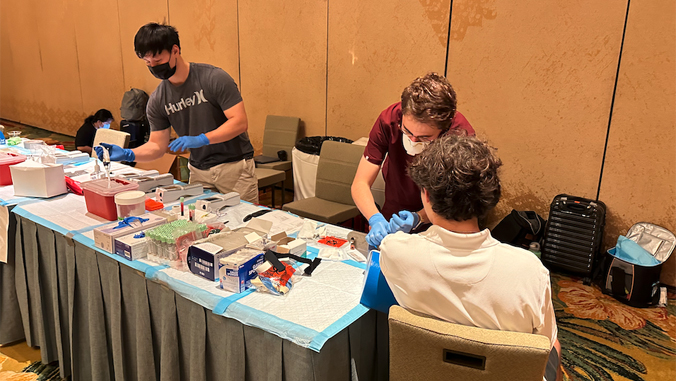
Hawaiʻi residents living in rural areas face significantly more health challenges than those who live in urban areas, according to a first-of-its-kind report by the University of Hawaiʻi Economic Research Organization (UHERO). Released August 25, the report also found that the challenges are even greater for rural residents with disabilities and for those living in poverty.
The data was gathered in June 2023 through a survey of 1,571 residents, with more than 20% identifying as living in rural areas. The assessment used data from the UHERO Rapid Survey, a twice-yearly health survey of a general population cohort in Hawaiʻi that has been administered since 2022.
This is the first rural health report targeted specifically for Hawaiʻi that measures data at the individual level.
Compared with those living in urban areas, residents in rural areas reported that their overall health was lower and had more days per week where their activities were restricted by their physical or mental health.
The report was produced by UHERO and funded by UH’s Rural Health Research and Policy Center (RHRPC) through a grant from the U.S. Department of Health and Human Services, Health Resources and Services Administration.
Significant findings:
- Residents in rural areas reported having a 43% lower odds of perceiving their overall health as excellent, very good or good compared to their counterparts in non-rural areas.
- Nearly 22% of respondents living in rural areas rated their health as fair or poor (21.7%, n=70) and fewer than 14% of non-rural respondents (14%, n=169) rated their health at this level.
- Rural residents reported an average of 3.8 days/week that their life activities were restricted by their physical health compared to 2.5 days in non-rural areas, and for mental health an average of 3.1 days/week versus 2.
- Having a disability and living in rural areas is associated with an additional 2 days/week of life activities restricted by physical health issues compared to people with disabilities in non-rural areas.
- Notably for Asians, high overall health (respondents who describe their overall health as excellent, very good or good) was less than 70% for rural residents, but more than 80% for non-rural residents.
- For those who live in rural households below the poverty line, less than 40% reported high overall health compared with more than 50% for non-rural residents.
- Native Hawaiians and Pacific Islanders (NHPI) made up a higher share of the rural sample (23.1%) compared to 14.7% among the people surveyed in non-rural areas, and NHPI reported 1.1 additional days per week that were affected by physical health issues compared with people who are not NHPI.
The report examines several definitions of rural areas. The results above are based on the report’s primary definition of rural areas, which are all zip codes in the state except for East Oʻahu, Kāneʻohe in the east to Kapolei in the west, Līhuʻe on Kauaʻi, Kahului-Wailuku on Maui, and Hilo and Kailua-Kona on Hawaiʻi Island.
The UH researchers noted that the report’s findings suggest that policy responses aimed at improving health outcomes and preventive healthcare utilization should include efforts to reduce disparities between rural and non-rural populations. The results also indicate that rural health policy should prioritize support for marginalized groups, especially individuals with disabilities and those with low incomes in rural regions.
“This report helps to tell the story of how health outcomes differ in rural areas compared to more urban areas, providing the evidence base for potential policy solutions to address these challenges,” said Aimee Grace, Principal Investigator of the Rural Health Research and Policy Center and Director of the UH System Office of Strategic Health Initiatives.
UHERO is housed in UH Mānoa’s College of Social Sciences and RHRPC is housed in the UH System Office of Strategic Health Initiatives.

